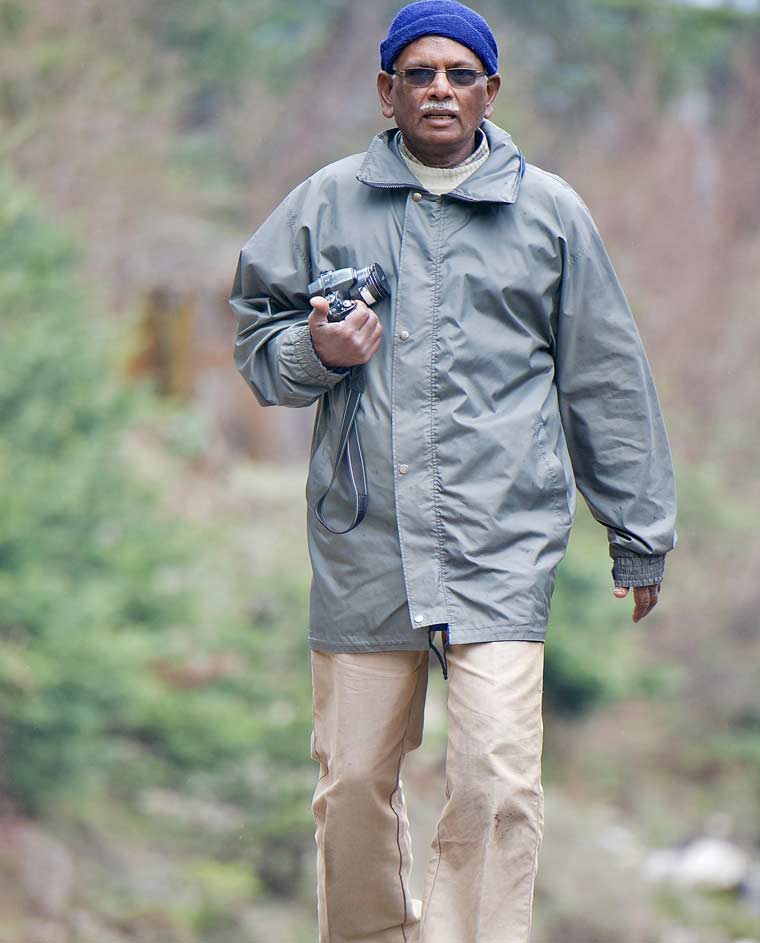The Tamil word asir is short for asirvatham, meaning blessing. And that was what Asir Jawahar Thomas Johnsingh was to legions of students, wildlife enthusiasts and conservationists.
Dr A.J.T. Johnsingh, 78, died in Bangalore at 1am on June 7, 2024, his family said. He was suffering from cancer. Johnsingh is survived by his sons Squadron Leader Mike Asir Johnsingh (retd) and Mervin Johnsingh, a Seattle-based senior designer with Microsoft. His wife, Kousalya, passed away many years ago.
Johnsingh was born in Nagercoil, Tamil Nadu, in 1945. He is credited with pioneering the field research on free-ranging large mammals in India by studying dholes in Bandipur Tiger Reserve in the late 1970s for his doctoral thesis. An alumnus of the Madras Christian College, Chennai, he held three brief positions—as a professor at Ayya Nadar Janaki Ammal College, Sivakasi; a postdoctoral fellow at the Smithsonian Institution, Washington D.C., and at the Bombay Natural History Society. In 1985, he joined the newly established Wildlife Institute of India, Dehradun, and remained there until 2005, when he retired as dean of the faculty of wildlife sciences.
“My everlasting memory of him would be of us following him like little ducklings as he walked through all sorts of landscapes,” said Dr Abishek Harihar, Johnsingh’s student and now the director of the tiger programme at Panthera, an NGO committed to the conservation of wild cats. “He taught me mammalogy, among other subjects, at WII, but what he really taught us all was the value of fieldwork. Being in the field, observing animal behaviour unfolding in front of you, noting it down and then putting it all into context. Research can sometimes become structured and boring. He infused it with passion. He would go out for a small field trip and still would come back and write about what he saw and add his knowledge to it. At his level, he did not have to do that. But he did it to immerse you in his world. He was a voice for species, landscapes and regions.”
 Dr A.J.T. Johnsingh in North Sikkim, 2013 | M.D. Madhusudhan
Dr A.J.T. Johnsingh in North Sikkim, 2013 | M.D. Madhusudhan
He was known as a practical conservationist and spoke his mind frankly. In a 2005 interview with the Sanctuary Nature Foundation, he told Bittu Sahgal: “(Jim Corbett) loved tigers, but he knew that a tiger that had turned maneater had to be put down. I find that ‘over-sentimentalism, is often the enemy of good conservation in India.”
When cheetahs were re-introduced in India, he told a national media conclave: “We don’t have a suitable habitat for cheetahs. For example, Kuno. I know the area exceedingly well. It is partly hilly and densely wooded. There is only one prey. In summers, temperatures are at 46 degrees to 47 degrees.” He was concerned that the cubs would be victims of heat stress; he was also worried about leopards in the area.
“Nowhere in the history of the Asiatic cheetah has it shared a habitat with leopards,” he added. “In the landscape level, they have occurred. For example, in my district in Tirunelveli, there were cheetahs and blackbuck in the plains. In the Western Ghats, you had leopards, tigers and wild dogs. These predators never came down into the plains and the cheetah never went up.”
He also supported the “need to urgently establish a second population far away from Gir” for the Asiatic lion. He feared that a fast-spreading and fatal disease could wipe out this unique population forever.
In the interview with Sahgal, he said, “I used to ask questions about wildlife that no one could answer, so I began to search for answers myself by observing animals.” That quest brought him many honours, including a Padma Shri. But the greatest honour would be his place in the hearts of his friends and students.



